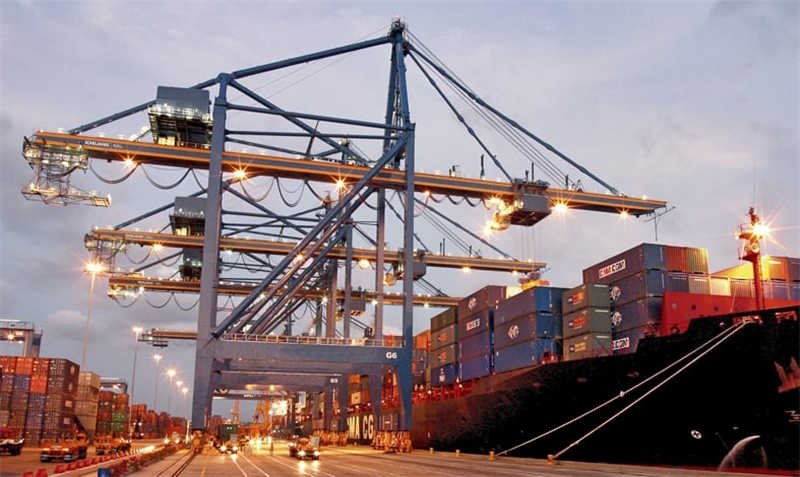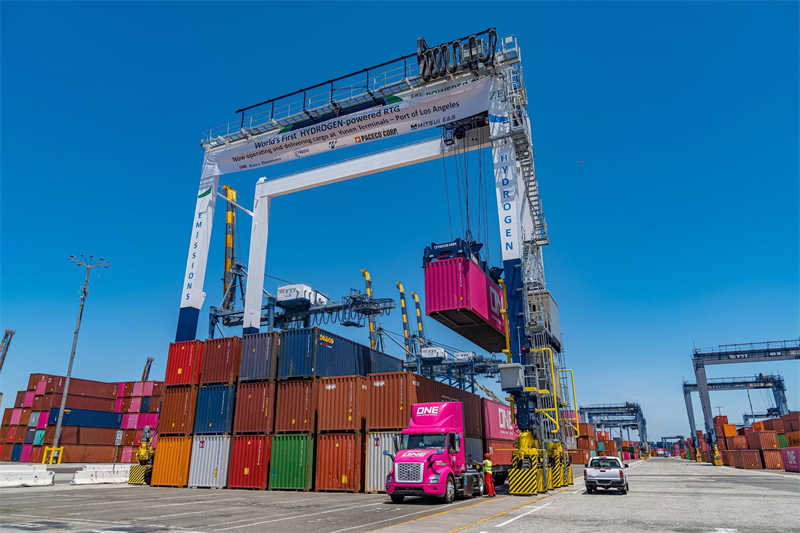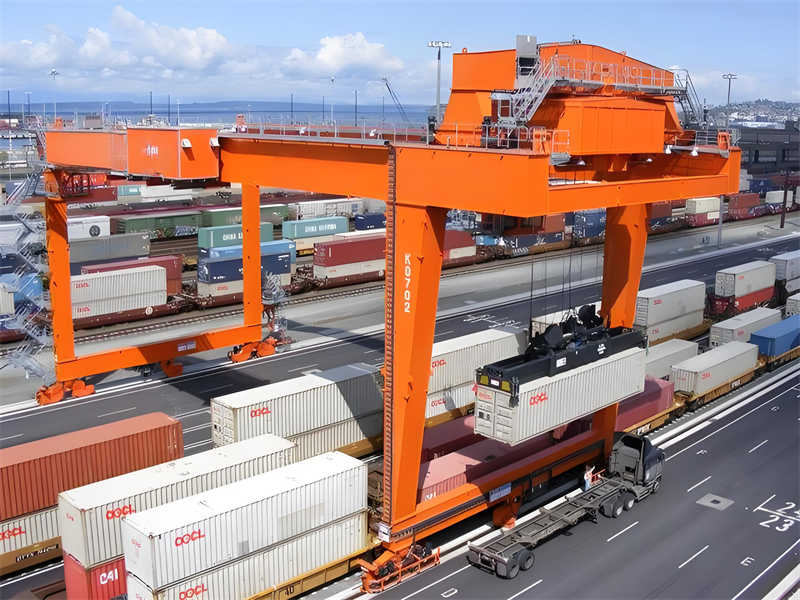22-May-2025
Port Crane Types Comparison
1. Introduction
In today’s rapidly evolving global trade landscape, selecting the right port crane is crucial for maximizing efficiency, reducing operational costs, and ensuring long-term competitiveness. With various crane types available—each designed for specific port operations—making an informed decision requires a deep understanding of their capabilities, costs, and best-use scenarios.
Dongqi Crane, a leading manufacturer of high-performance port equipment, specializes in Ship-to-Shore (STS), Rubber-Tyred Gantry (RTG), and Rail-Mounted Gantry (RMG) cranes. This guide provides a detailed comparison of these crane types, helping port operators, terminal managers, and logistics planners choose the optimal solution for their needs in 2025 and beyond.
(Note: Dongqi Crane does not manufacture Mobile Harbor Cranes—this guide focuses on STS, RTG, and RMG models.)
2. Ship-to-Shore (STS) Cranes: The Giants of Container Handling
2.1 Key Features & Specifications
STS cranes are rail-mounted gantry cranes designed for direct container transfer between ships and shore. They dominate large-scale container terminals due to their high lifting capacity (50–120+ tons) and long outreach (20–30+ container rows).
Dongqi STS Crane Models (2025):
- DQ-STS60: 60T capacity, 22-row outreach, semi-automated
- DQ-STS100: 100T capacity, 26-row outreach, fully automated
- DQ-ULCV120: 120T capacity, 30-row outreach, AI-powered
2.2 Advantages
✔ Unmatched Productivity – Capable of 30–40 moves/hour (dual-trolley models).
✔ Optimized for Mega-Ships – Handles Post-Panamax and ULCVs (20,000+ TEU).
✔ Automation-Ready – AI-assisted positioning, remote monitoring, and predictive maintenance.
2.3 Limitations
✖ High Initial Cost – $6M–$20M, depending on capacity and automation.
✖ Infrastructure Demands – Requires deep-water berths (14m+ draft) and reinforced rail tracks.
2.4 Best For
- Large hub ports (e.g., Shanghai, Rotterdam, Los Angeles).
- Terminals with high annual throughput (800,000+ TEU).
- Automation-focused operations.

3. Rubber-Tyred Gantry (RTG) Cranes: Flexible Yard Solutions
3.1 Key Features & Specifications
RTG cranes are mobile, rubber-tired gantry cranes used for container stacking and truck loading in storage yards. They offer greater flexibility than fixed cranes and are ideal for medium-sized ports and multi-purpose terminals.
Dongqi RTG Crane Models (2025):
- DQ-RTG40: 40T capacity, 6+1 rows, diesel-electric
- DQ-eRTG45: 45T capacity, 7+1 rows, full-electric
- DQ-SmartRTG50: 50T capacity, AI-assisted steering
3.2 Advantages
✔ Mobility & Adaptability – Can be repositioned as needed.
✔ Lower Cost – $1.5M–$4M, significantly cheaper than STS cranes.
✔ Hybrid/Electric Options – Reduces fuel costs by 30–50%.
3.3 Limitations
✖ Lower Efficiency – 15–22 moves/hour (vs. 30+ for STS).
✖ Higher Maintenance – Tires, engines, and steering systems require frequent servicing.
3.4 Best For
- Regional ports with space constraints.
- Terminals needing flexible yard operations.
- Budget-conscious operators.

4. Rail-Mounted Gantry (RMG) Cranes: High-Density Stacking Solutions
4.1 Key Features & Specifications
RMG cranes operate on fixed rail tracks within container yards, offering higher stacking density than RTGs. They are commonly used in automated terminals.
Dongqi RMG Crane Models (2025):
- DQ-RMG50: 50T capacity, 5-high stacking
- DQ-AutoRMG60: 60T capacity, automated positioning
- DQ-HybridRMG55: 55T capacity, energy-recovery system
4.2 Advantages
✔ Higher Stability – No tire wear, smoother operation.
✔ Better for Automation – Ideal for automated container yards (ACYs).
✔ Greater Stacking Height – Up to 8 containers high (vs. 5–6 for RTGs).
4.3 Limitations
✖ Less Flexibility – Cannot be easily relocated.
✖ Higher Infrastructure Cost – Requires rail installation ($1M+ per km).
4.4 Best For
- High-volume automated terminals.
- Ports with limited yard space needing dense stacking.
- Greenfield projects with long-term expansion plans.

5. Comparison Table: STS vs. RTG vs. RMG Cranes
| Feature | STS Cranes | RTG Cranes | RMG Cranes |
|---|---|---|---|
| Mobility | Fixed (rail-mounted) | Mobile (rubber-tired) | Fixed (rail-mounted) |
| Capacity | 50–120+ tons | 30–50 tons | 40–60 tons |
| Productivity | 30–40 moves/hour | 15–22 moves/hour | 20–28 moves/hour |
| Automation | High (L3 possible) | Medium (L2 possible) | High (L3 possible) |
| Cost (2025) | $6M–$20M | $1.5M–$4M | $2M–$6M |
| Best For | Mega ports, ULCVs | Medium ports, yards | Automated terminals |
6. How to Choose the Right Crane?
6.1 Decision Factors
- Vessel Size
- ULCVs (20,000+ TEU) → STS Cranes mandatory
- Feeder ships (<5,000 TEU) → RTG/RMG possible
- Terminal Throughput
- <500,000 TEU/year → RTG preferred
- >800,000 TEU/year → STS + RMG combo
- Automation Needs
- Full automation? → RMG or automated STS
- Semi-automation? → RTG with GPS guidance
- Budget Constraints
- Limited capital? → RTG (lowest upfront cost)
- Long-term investment? → STS (highest ROI over 10+ years)
7. Future Trends (2025–2030)
7.1 Automation & AI
- STS Cranes: AI-driven collision avoidance, remote-controlled operations.
- RTG/RMG Cranes: Autonomous navigation, battery-swapping systems.
7.2 Green Energy Shift
- Electric & Hybrid RTGs gaining market share.
- Hydrogen-powered STS cranes in development.
7.3 Dongqi’s Innovations
- SmartRMG™: Automated stacking with LiDAR precision.
- AI-Powered STS: 30% faster cycle times with machine learning.
8. Conclusion: Partner with Dongqi Crane for Your Port Needs
Choosing between STS, RTG, and RMG cranes depends on:
✔ Vessel size & terminal capacity
✔ Automation goals
✔ Budget & infrastructure constraints
Dongqi Crane provides:
✅ High-performance STS, RTG, and RMG cranes
✅ Competitive pricing (20–30% below European brands)
✅ Custom automation & energy-efficient solutions
📞 Contact Dongqi Crane Today for a Consultation!
🌐 Website: https://sg.craneyt.com/
📧 Email: sales010@cranesdq.com
Upgrade your port operations with the right crane in 2025! 🚢⚡

